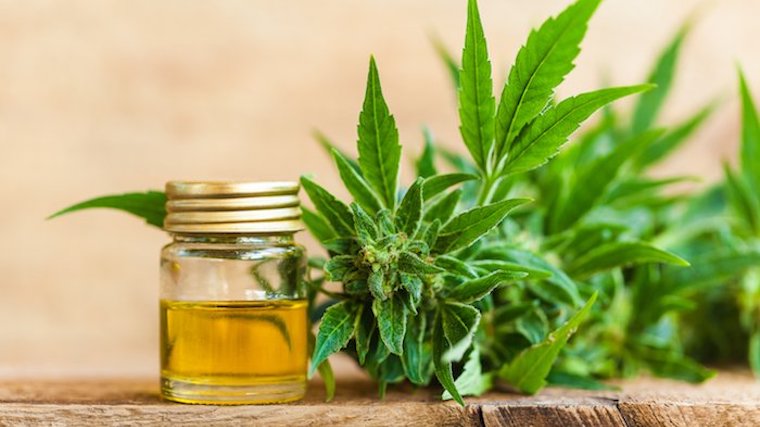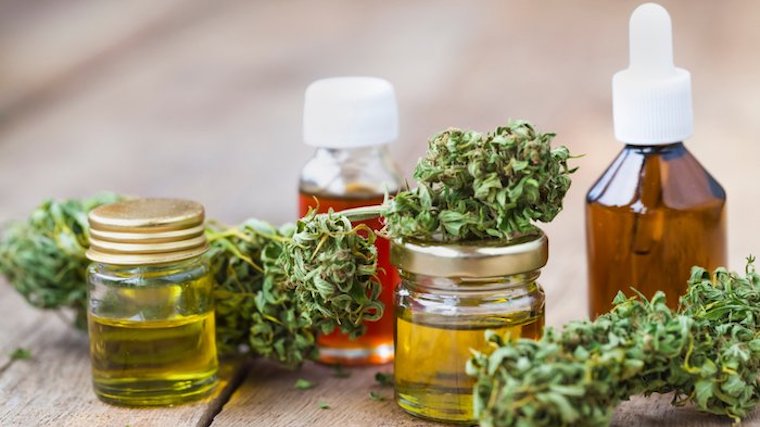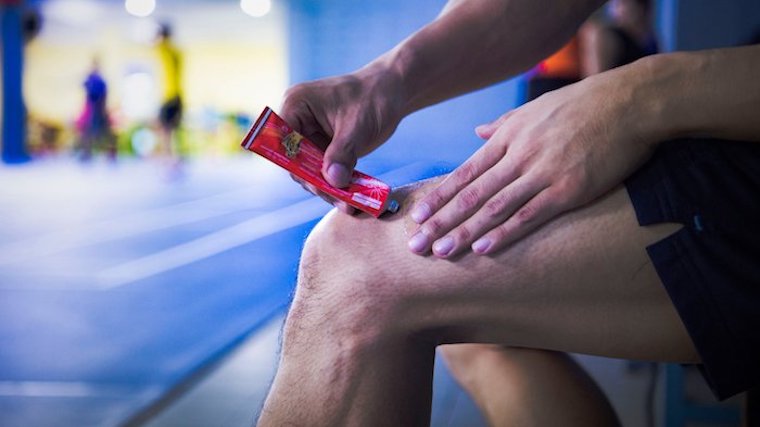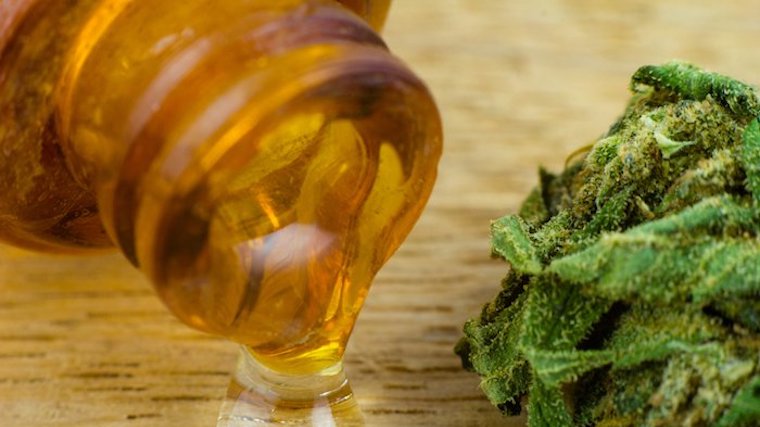Cannabidiol (CBD), a natural substance derived from cannabis, is legal. As of 2018, it’s no longer on the World Anti-Doping Agency’s prohibited list. A new company creating CBD-infused products seems to launch every other day, culminating in a current national market generating five billion dollars worth of sales in 2020, according to Statista. (1) By 2026, it is estimated to generate five times that many sales.
You may encounter athletes and brands claim CBD is a new cure-all that can address everything from headaches to sore joints to inflammation to sleep issues. You might even run into marketing campaigns that use misleading phrases such as “CBD’s a wonder drug with zero side effects, bro. It’s not even really a drug.” Actually, it really is a drug — it’s a cannabinoid.

CBD’s explosion in popularity transformed it into a topic rife with myths. The fact that it only became legal for over-the-counter sales in 2018 means that, historically, it’s been tough to carry out studies on it. BarBend spoke to a biochemist and two entrepreneurs to learn more about the following topics:
Cannabidiol (CBD)
Editor’s note: The content on BarBend is meant to be informative, but it shouldn’t take the place of advice and/or supervision from a medical professional. The opinions and articles on this site are not intended to diagnose, prevent, and/or treat health problems. Speak with your physician if you have any concerns.
What Is CBD?
CBD one of at least 113 cannabinoids identified in cannabis. Of those, it is one of the most studied as it can make up to 40 percent of the plant’s extract. Tetrahydrocannabinol, or THC, is traditionally coveted by those looking for the psychoactive effects of a standard spliff — it gets you high. THC does have links with managing pain and certain medical conditions as well. Still, we’re focusing on the cannabinoid that’s federally legal and more strongly associated with some particular health benefits.
CBD is kind of like the fiber in a brownie or the antioxidants in chocolate: it’s not why most people usually consume them, but it seems to sneak in some benefits.
One of the main ways CBD interacts with the body is with our endocannabinoid system — a regulatory system that scientists named while trying to figure out how cannabis affects the body. We now understand it as one of our most important physiological systems: it mediates inflammatory response, memory, hunger, learning, and cognitive function.
You can find cannabinoids in the plant, but endocannabinoids are also produced. While we initially thought this system mostly interacted with mood and pain, we’re now learning that their receptors are present in organs, connective tissues, glands, and immune cells.

CBD and Pain
The area with the most potential benefit seems to be for managing pain and inflammation for athletes. (2) There is a need for more prominent, randomized studies. However, the studies completed thus far — most on mice, but some on humans — have found that by acting on specific cannabinoid receptors, CBD can exert analgesic or pain-relieving effects. (3)(4)(5)
“It actually acts as an antioxidant, and through that mechanism, it’s anti-inflammatory,” says Michael Mastell, a biochemist and strongman. “It acts on the TRPV1 receptor, the same receptor as capsaicin. The dosing scheme seems to be about 300 milligrams taken orally. Studies on cannabinoids, in general, have found they have detrimental effects on athletes. However, CBD specifically doesn’t have any negative effects.”
Mastell adds that it’s typically not a great idea for athletes to use nonsteroidal anti-inflammatory drugs (NSAIDs) to manage their pain for an extended period because it works through what’s called COX inhibition. The side effects of long-term use can include digestive issues, insomnia, and headaches. Still, since CBD doesn’t work as a COX inhibitor, it might hold more promise as a longer-term solution to pain and inflammation.

“NSAIDs and paracetamol are great for addressing inflammation and chronic pain but are essentially suppressants that make the brain feel less pain by producing certain enzymes,” says Austin Katz, the founder of Shea Brand, which produces CBD-based products. “Cannabinoids, on the other hand, essentially cut out the middle man by binding directly to receptors that are either located on the affected area or are responsible for controlling certain functions like pain, immunity response, and inflammation.”
Again, research on this is still in its infancy, but the evidence suggesting that CBD can help mediate inflammation also means that, indirectly, it may help with immunity. (6) It’s an indirect bonus for an athlete, but we all know that getting sick can really throw a wrench into a well-designed strength program.
[Learn more: Does smoking weed affect workouts?]
CBD, Anxiety, and Sleep
Much is written on the topic of CBD and mental health. Some evidence has suggested that it could help reduce tremors in people with Parkinson’s disease, and rodent studies have found it may help minimize iron buildup in the brain, associated with memory deficits and neurodegeneration. (7)(8)
What if you’re not worried about these sorts of conditions and just want to sleep better or manage your anxiety? If you’re struggling with anxiety, first of all, you should see a qualified mental health professional. That said, CBD may exert some effects here.
Research published in The Permanente Journal, for example, found that 25 to 75 milligrams of CBD helped to decrease anxiety and improve sleep in two-thirds of its participants. A couple of studies have even found that higher doses (300 to 600 milligrams) can reduce fear of public speaking among anxiety-prone individuals. (9)(10)(11)
Mastell points to a study that found CBD to help rats perform better in a particularly stressful maze called an elevated plus-maze, which sounds unusual. Still, it’s a well-established type of experiment for figuring out how something might affect a person’s ability to handle stressful situations. (12)

“It seems to have a positive impact as anti-anxiety effects, and there’s a benefit because some of these SSRIs, which are your typical depression drugs, can interfere with the sleep cycle,” Mastell notes. “So it seems like you might not get as strong an anti-anxiety benefit as you do with those drugs, but you also don’t get the sleep problems. This has benefit to the athlete for helping their sleep cycle, but a lot of these benefits are in the secondary — you wouldn’t take it for (sleep).”
In short, there’s more evidence to suggest that CBD can improve sleep if your sleep is disturbed because of anxiety, not so much if you’re just a healthy individual who wants to sleep better. (13)
How to Take CBD
The recommended dosages vary a lot. Many experts suggest about 300 milligrams taken orally, but others have found benefit with as little as 20 milligrams, a relatively common dose in CBD supplements for athletes. It’s wise to start with small doses to assess your sensitivity.
While many recommend taking it orally, there’s also decent evidence that when applied topically (i.e., in an ointment to sore joints). it can also have an effect. Rodents with osteoarthritis experienced significantly improved symptoms this way in a 2017 study published in Pain, as did a previous study on a rat model of arthritis. (4)(12)
“There is data that even if you take CBD sublingual, which is probably better as the first-pass metabolism of the liver is very high, even then, taking it with food appears to increase bioavailability,” says exercise physiologist Dr. Mike T Nelson. (13) “Although that data is still extremely variable from one person to the next.”
“Topicals, sublingual oils, ingestible and vapes are all viable administration options, but you really need to know how to use them as tools respective to your specific needs, rather than cure-alls,” says Katz.
Katz recommends taking it sublingually for anxiety, topically for pain, and for headaches either topically on your temples and forehead or through inhalation. Note that he considers these more as the optimal methods than the only viable ones. Start small and ask yourself how you feel every 10 minutes until an hour hits.

“If the effects weren’t enough, up the dosage,” Katz suggests. “If it worked for you first try, then next time try lowering the dosage in pursuit of a more cost-effective dosage. As you do this enough times with various delivery systems, over time, you’ll develop an understanding of what works for you and how to get the most utility out of it.”
Masters Olympic weightlifter and CrossFit® athlete Hank Berger co-founded the athlete-focused CBD company Altrufuel in 2018 and emphasizes the importance of sourcing your products from the right places.
“One of the biggest mistakes is taking a product where you don’t know where it’s from — not everyone is following the standards that are set out,” Berger says. “There’s a really specific compliance you have to follow. The actual CBD or hemp has to be tested by a third-party lab, so as soon as it comes off the flower, it has to go to a lab, and then if it has greater than 0.3 percent THC, then it’s really not acceptable for commercial use.”

That sentiment is significant for competitive athletes. While WADA has allowed the use of CBD, some federations may still have it on their prohibited list. If you’re not using quality CBD, it may contain enough THC to result in a positive test. Demand proof of quality from your suppliers.
Wrapping Up
The majority of the studies cited in this article were on rodents — there are not enough high-quality studies on humans to make firm statements about CBD. It’s pretty widely accepted that CBD holds real promise as a means for alleviating pain, and researchers are exploring further the potential benefits for anxiety, immunity, and other areas of health.
For now, we’re still in the early stages. But the radical shift in scientific opinion on CBD — from an illegal and maligned substance to a groundbreaking pain medicine — is nothing short of astounding.
References
- Conway, J., & 17, J. (2021, June 17). CBD product dollar sales U.s. 2019-2026. Statista. Retrieved September 21, 2021, from https://www.statista.com/statistics/1067467/cbd-product-dollar-sales-us/.
- Burstein S, et al. Cannabidiol (CBD) and its analogs: a review of their effects on inflammation. Bioorg Med Chem. 2015 Apr 1;23(7):1377-85.
- Klauke AL, et al. The cannabinoid CB₂ receptor-selective phytocannabinoid beta-caryophyllene exerts analgesic effects in mouse models of inflammatory and neuropathic pain. Eur Neuropsychopharmacol. 2014 Apr;24(4):608-20.
- Woodhams SG, et al. The role of the endocannabinoid system in pain. Handb Exp Pharmacol. 2015;227:119-43.
- Philpott HT, et al. Attenuation of early phase inflammation by cannabidiol prevents pain and nerve damage in rat osteoarthritis. Pain. 2017 Dec;158(12):2442-2451.
- Petrosino S, et al. Anti-inflammatory Properties of Cannabidiol, a Nonpsychotropic Cannabinoid, in Experimental Allergic Contact Dermatitis. J Pharmacol Exp Ther. 2018 Jun;365(3):652-663.
- Peres FF, et al. Cannabidiol as a Promising Strategy to Treat and Prevent Movement Disorders? Front Pharmacol. 2018 May 11;9:482.
- da Silva VK, et al. Novel insights into mitochondrial molecular targets of iron-induced neurodegeneration: Reversal by cannabidiol. Send to Brain Res Bull. 2018 May;139:1-8.
- Shannon S, et al. Cannabidiol in Anxiety and Sleep: A Large Case Series. Send to Perm J. 2019;23:18-041.
- Zuardi AW, et al. Effects of ipsapirone and cannabidiol on human experimental anxiety. J Psychopharmacol. 1993 Jan;7(1 Suppl):82-8.
- Bergamaschi MM, et al. Cannabidiol reduces the anxiety induced by simulated public speaking in treatment-naïve social phobia patients. Neuropsychopharmacology. 2011 May;36(6):1219-26.
- Guimarães FS, et al. Antianxiety effect of cannabidiol in the elevated plus-maze. Psychopharmacology (Berl). 1990;100(4):558-9.
- Hammell DC, et al. Transdermal cannabidiol reduces inflammation and pain-related behaviours in a rat model of arthritis. Eur J Pain. 2016 Jul;20(6):936-48.
- Stott CG, et al. A phase I study to assess the effect of food on the single dose bioavailability of the THC/CBD oromucosal spray. Eur J Clin Pharmacol. 2013 Apr;69(4):825-34.
Featured image via ElRoi/Shutterstock